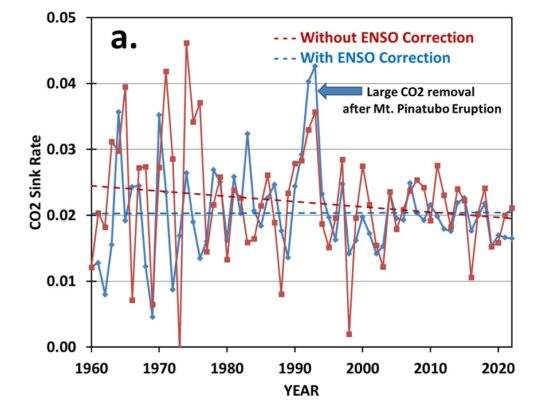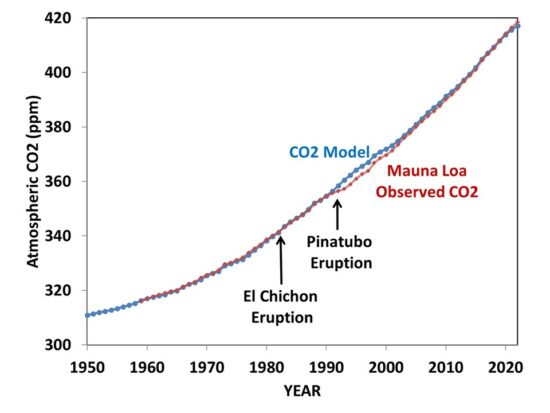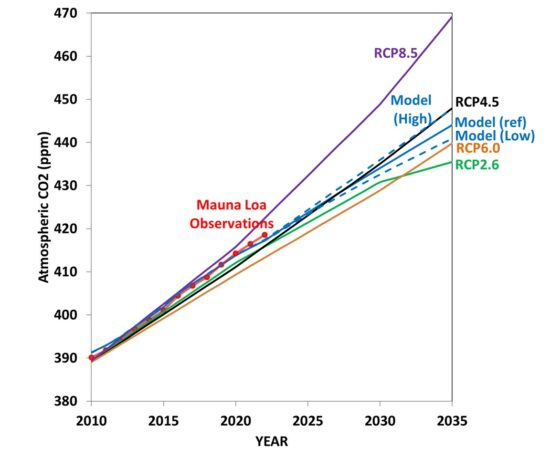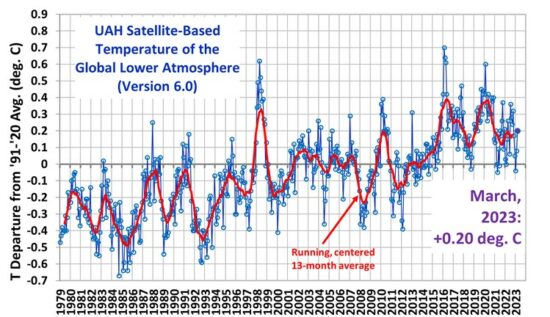This is part 4 of my series on quantifying Urban Heat Island (UHI) effects on surface air temperatures as reported in the monthly GHCN datasets produced by NOAA.
In previous posts I showed results based upon monthly-average Tavg, which is the average of of daily maximum (Tmax) and minimum (Tmin) temperatures. Since late 2019, NOAA produces monthly average datasets for only Tavg, but since there are large differences in the UHI effects between Tmin and Tmax (urban warming is much larger at night than during the day, thus affecting Tmin more), John Christy wanted me to compute results for the older Tmax and Tmin datasets archived by NOAA.
As I have discussed previously, our computations of UHI are, I believe, rather novel since we do not classify stations as urban or rural. That is how most researchers have approached the problem. But as I have mentioned before, UHI warming occurs much more rapidly at very low population densities (PD) than it does at high population densities for the same population increase. As a result, a small population increase at a rural station can produce the same spurious warming as a large population increase at an urban station. This means that previous published results showing little difference between rural and urban trends did not actually demonstrate that homogenization methods actually remove UHI effects from temperature trends.
Instead of classifying stations as either rural or urban, we use regression to compute the slope of temperature-vs-population density in many sub-intervals of 2-station pair average population density, from near-zero PD to very high PD values. Then we integrate these regression slopes through the full range of population densities.
Since NOAA’s GHCN Tmax and Tmin dataset (v3) does not have nearly as many stations as their newer (v4) Tavg dataset, I have combined the 2-station matchups for May, June, and July rather than showing results for an individual month. I have used all matchups every ten years from 1880, 1890, 1900,… 2010 that are within 150 km and 300 m elevation of each other. All land stations from 20N to 80N latitude are included. I have computed results for both the unadjusted data as well as the adjusted (homogenized) data.
The results (below) show that the total UHI effect in summer for highly-populated stations averages 3.5 times as large in Tmin as it does in Tmax. Each curve is based upon approximately 300,000 monthly 2-station matchups.
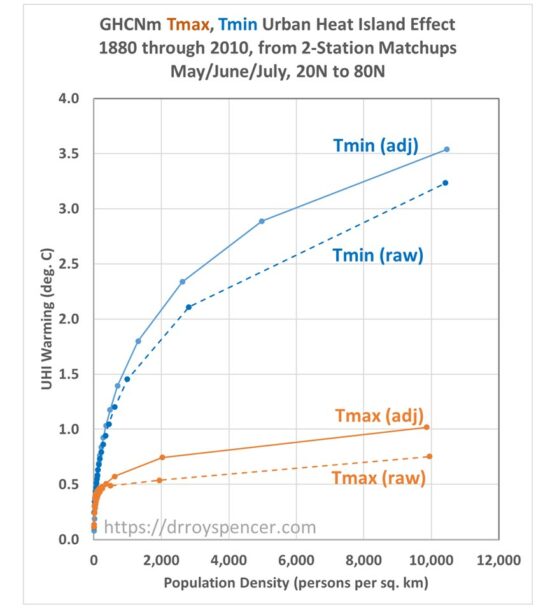
The nonlinearity of the relationship is, as other investigators have found, very strong.
Note that the UHI effect shows up more strongly in the adjusted GHCN data than in the unadjusted data. I cannot explain this. It is not because of the weeding out of bad temperature data, because that only affects regression coefficients if noise is reduced in the independent variable (2-station population density differences), and not in the dependent variable (2-station temperature differences). The 2-station PD differences do not change between the raw and adjusted GHCN data.
As I have mentioned before, the above results do not tell us the extent to which GHCN temperature trends have been affected by urbanization effects. SPOILER ALERT: My preliminary work on this suggests UHI effects are rather large between 1880 and 1980 or so, then become quite small compared to observed temperature trends. But it must be remembered that here we are using population density as a proxy for UHI, which is not necessarily optimum. It is possible for UHI effects to increase as prosperity increases for a population density that remains the same.

 Home/Blog
Home/Blog